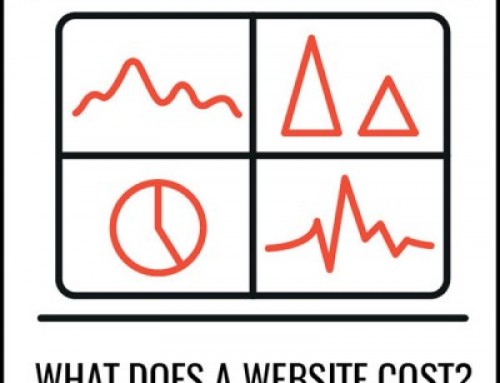Powerful websites are the result of a series of important choices, and the good news is that those choices are within your power. But you can only make those choices if you understand what they are.
An effective website does much more than just light up when someone visits – its strength becomes an integral part of how you succeed. Our experience in website development with many clients over the past fifteen years has highlighted which choices are critical for an effective site.
Alignment
Your website needs to align with the purpose of your organization. By aligning we mean much more than having the right colors.
Here are questions about your organization’s DNA that you need to consider when setting goals for your site:
- What is “success” for your organization in ten words or less?
- Can you drive revenue or service outcomes directly from your site? If not, how can you push the process forward by pre-qualifying prospects?
- What specific actions do you want visitors to take after arriving?
- How will those visitor actions connect to your daily activities and goals? Long-term goals?
- Are visitors expected to continually return to the site for service, or is it an introduction for other contact?
- Are your visitors most likely to be one-time customers or life-time customers?
- Are you a service organization that focuses on the immediate needs of others (e.g., a non-profit or a plumber)? If so, you provide solutions and need to start with your customer’s need.
- Or are you a performer who promotes yourself (e.g., a musician)? If so, you provide experiences, and need to start creating that experience, now.
Confusion about your identity will only be amplified if you don’t have questions like these sorted out before you begin. The design process may actually serve as an opportunity to remind your team of why you are doing what you do. Your web communication should stream with all your other marketing efforts – cross-purposing material maximize the impact of each piece and that will make life easier.
If considering your basic mission seems like too fundamental a question to ask when all you wanted to do was build a website, then just take a minute to consider that. Messaging is not whipping cream on top of real activity. As you build trust with your audience, their only experience of you IS your message. The good news is that when you re-calibrate your message to align with your most important goals you will find yourself filtering out a lot of conversations and expectations that are outside the scope of your mission. Without all those distractions you will find both your communications and the resulting activity much more effective.
Focus
We can often make a website more powerful by reducing the amount of content and by introducing a better hierarchy of organization. Seeking to reduce the amount of content may sound strange when we are often told that people expect more, more, and then a bit more. But what all of us need to make decisions is clarity. If you give people a thousand options and dozens of steps to make their choices, they will most often just leave, because leaving is the simplest choice.
We need to layer our information appropriately so that we inform and guide rather than overwhelm the visitor. Simplicity and depth are not opposites, and you won’t get visitors benefiting from your depth if you don’t offer them simplicity.
Clear Action Points
Making a general impression is what snowstorms and meteorites do. That is not building something. If you want to establish a relationship with your visitors, don’t do a fly-by and yell something vague. Start at the ground level, offer clear pieces of information and make specific requests for contact. This is true for all communications, but your website is perhaps the most pointed example of where good planning can drive success.
Activity in general is not our goal. Don’t worry about how many page views you get, focus on providing pages that guide the visitor to the next step. You will likely find that you get better results using a leaner site with less page views.
On a recent website project, we worked with our client to identify a particular action that we wanted visitors to take. It had always been the goal of our client to make this happen, but the existing site did not have content structured to maximize this outcome. After re-working content and especially the site structure, the client saw a dramatic improvement in visitor focus. Previously, the target page that invited action represented 1.5% of page views. That same target page represents over 6% of page views, and most importantly the number of prospects initiating contact has increased dramatically.
Launching is a Starting Point, Not an Endpoint
This is a reality that seems to sneak up on people. Maybe it is because we think of websites as something external to our daily activity. If we think of our website as a finished product that gleams in the sun like Mount Rushmore, we have pressure to make something monumental and fixed, and then we forget about it. But that is not how our visitors use the web, and making the mistake that getting on the web is a “one and done” will set us up to resent the necessary investment of time that an effective website requires.
If we can move from monumental thinking to conversational thinking we will have a better sense of what sort of commitments we need to make. We would never limit conversations with guests in our office to just a few seconds. Let’s show that same hospitality towards web visitors, planning to allow the conversation to continue and grow.
Just like any professional activity, if we plan for content creation properly, we can expect to see real benefits.
Backroom Technology is Important
There are three technology touchpoints that interact here: your site platform (the framework for storing your pages and images), SEO (getting visible on search engines), and hosting (the machine and software that serves up the content to visitors).
Platforms. Work with your web developer to discover ahead of time how easy it will be for you to manage your site. What seems easy to them may not feel that way to you (e.g., Joomla, Drupal, and other nerd-tastic Content Management Systems).
You may be a good candidate to manage your own content. There are very good solutions available now that are powerful in terms of their capabilities and offer good options for self-management. But we need to know the boundaries of our personal effectiveness and account for them. A good comparison might be the improvement that automobile owners experienced when more features became available and cars became more reliable. I can count on driving many places reliably, but I also know that I will have best performance and reliability by sticking to a service regimen and not relying on myself to fix highly technical components like the transmission.
SEO. A good platform will have the technologies that help your site to rank well in search results. There are a ton of technical details here, but what I’d like to get across to you is that you can get exceptional results, but (like everything else in life) those good results come from detailed, concentrated effort. There are no magic formulas, but there are formulas, and those modes of content creation involve careful thinking about how content is presented and linked. There are also a lot of choices and tweaks that the web visitor will never see, but the search engines will always see. Good web developers will be able to show you how that works and you will have more confidence in their recommendations once you understand why they are doing what they do.
Hosting. Think also about where your site is going to live. There are significant improvements available to your site by choosing a web hosting service that is performance-optimized. In-depth analysis of how a web page loads reveals some interesting facts. A page that takes 5 seconds to load might actually only be taking 1 second to transfer information, and 3 or 4 seconds waiting for the server to wake up and retrieve the information, piece by piece. That’s crazy. We’re seeing some incredible performance from our latest hosting arrangement which has lightning-fast SSD drives for storage and advanced caching options to maximize throughput. That’s techno-talk for no lengthy delays, and cuts that dead time from 3 seconds to a few hundredths of a second. A high performance server will provide dramatic improvements to your visitor’s experience.
Security
It is an unfortunate reality that your site will be attacked. Even if there is no critical information on your site, hackers want to take control and use your location as a platform for their activities. If they succeed, your daily life will become very difficult, and you may be very publicly embarrassed by what they do with your content. Even if you have good off-site backups, the restoration process will take time, effort and perhaps money.
Just this week, a site we are working on that is not yet launched and is not even visible to the general public came under attack. It was probed, prodded and scratched at by hundreds of computers around the world. One particular location in France tried to break in over 30,000 times. However, since our first task in developing sites is to start with robust security, these attacks had little effect, and in fact we were able to automatically identify and block out all the attackers. No sleep was lost.




